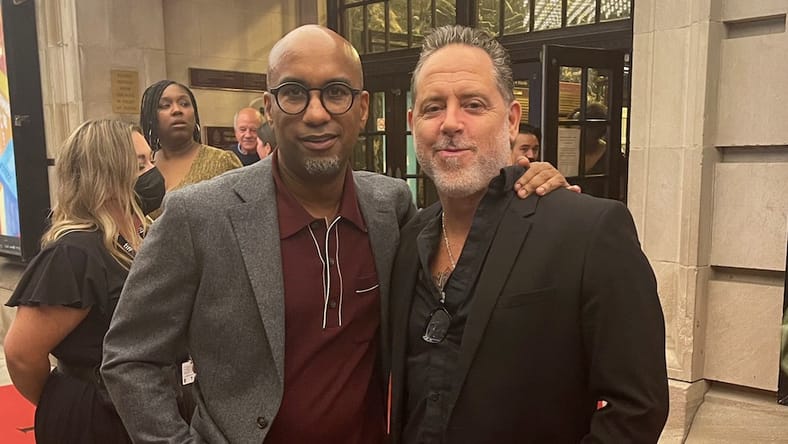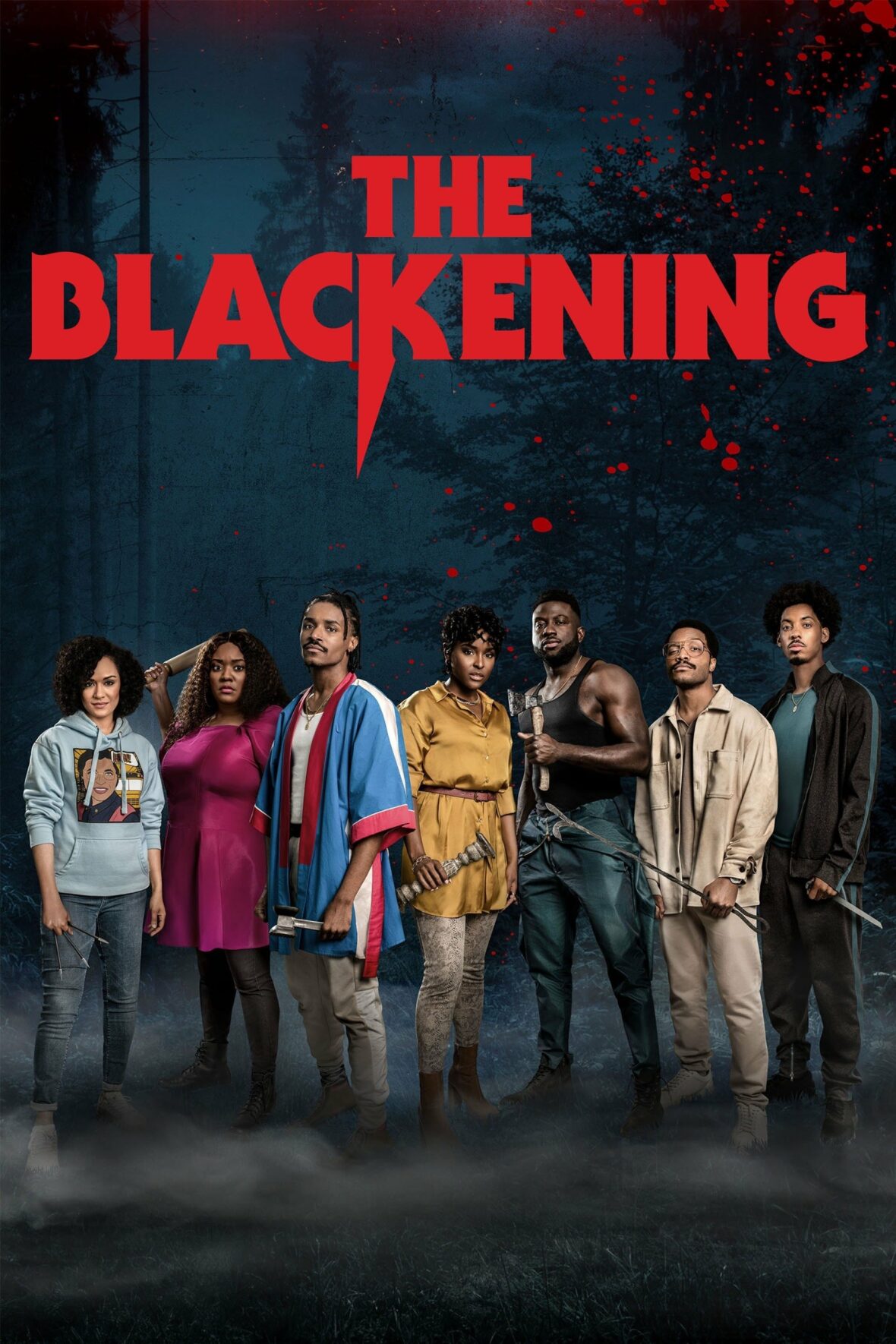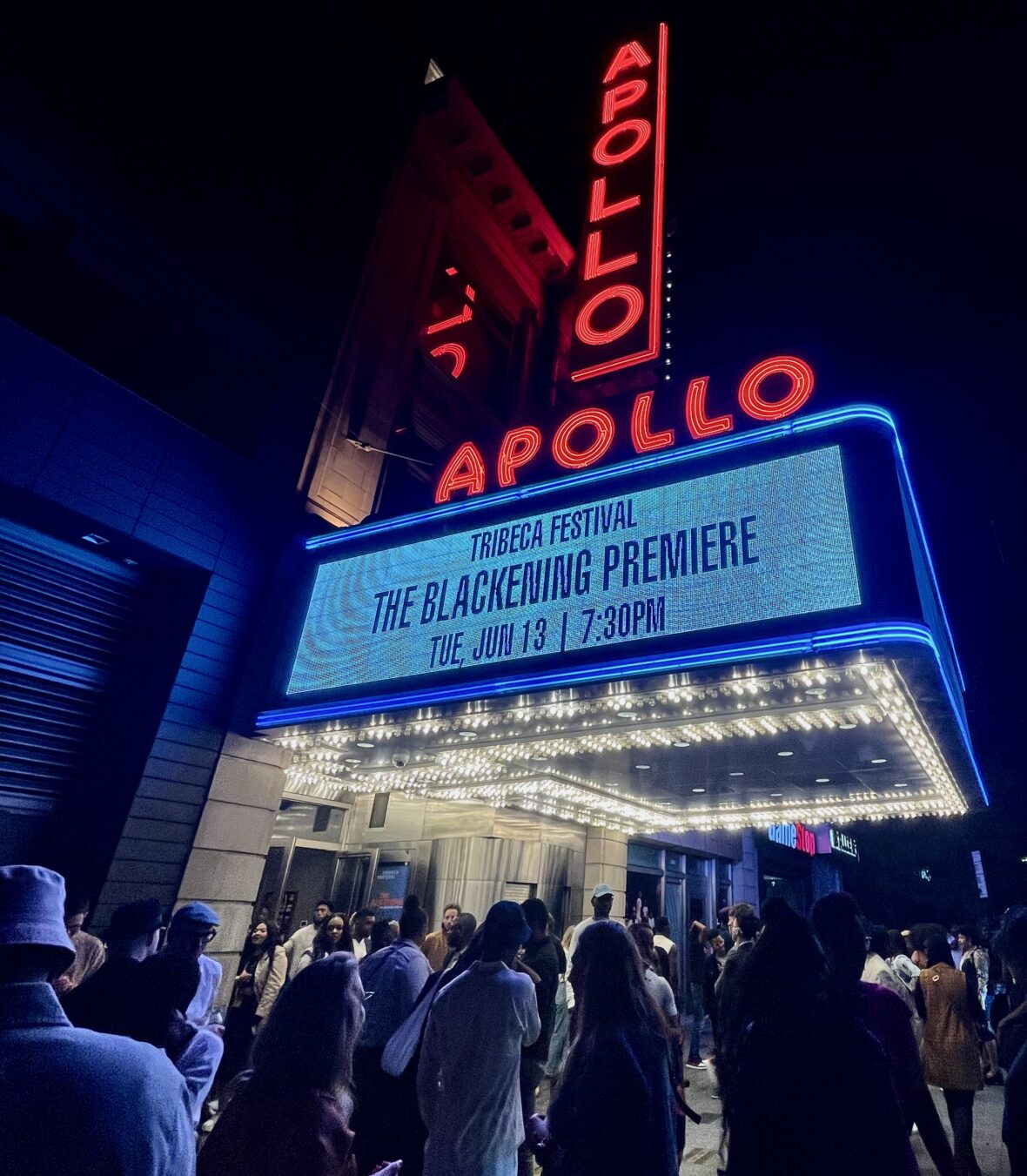
The Blackening post supervisor Jijo Reed got a nice surprise when the Tim Story-directed horror comedy played for test audiences: It got even more laughs than the filmmakers expected.
“What we were able to glean was seeing how the jokes play in an audience, what hits, what misses,” says Reed, whose Sugar Studios handled the film’s over 300 visual-effects shots, as well as color, audio, sound design, mix and delivery.
“We often got surprised on things that things that hit really well, that you didn’t even know would be a joke — like a certain pause that can only be realized when there’s a full house. You don’t really notice the impact of subtle moments when you’re in an editing room as much as you do with an audience.”

What Is The Blackening About?
The Blackening — starring an ensemble cast that includes Jermaine Fowler, Antoinette Robinson, Dewayne Perkins, Sinqua Walls, Grace Byers, Melvin Gregg, X Mayo, Jay Pharoah and more — is both a horror movie and a comedic meta commentary on the racial dynamics of slasher films.
When a group of Black friends realize someone is trying to kill them, slasher-style, they reason that the Black person in a horror movie always dies first, and try to decide who in the group is the blackest.
Watching the film with test audiences helped Reed and his Sugar Studios team — working with editor Peter S. Elliott — make sure certain lines of dialogue were a little higher in the mix. It also made them realize that VFX arrows that shoot across the screen needed to be more visible.
“There was a constant pursuit of everyone involved to make it as perfect as can be. We had a number of free screenings in order to get feedback from focus groups, the general public, and friends and family,” Reed explains.
The arrows were especially important because they needed to be visible — or “readable,” in post parlance — for audiences to appreciate their impact.
“We had to definitely play a lot with the thickness of the arrows, the length of the arrows, the speed of the arrows, the arc of the arrows,” Reed recalls. “When you’re in an edit room with a nice monitor, you can see that arrow pretty nicely. But when, you know, it’s a night scene, and you’re in a theater, and and it goes by really quickly, sometimes you don’t you just don’t read all the frames that need to be read.”
In addition to sharpening all those jokes and arrows, Sugar Studios also hosted the remote editing of the project. Sugar Studios occupies three floors of L.A.’s Art Deco landmark Wiltern Building, including the penthouse, and has plenty of room to coordinate edits.
The Blackening cinematographer Todd A. Dos Reis got to know the facility very well as he worked with Reed on the P3 color grading of the film. (P3 is the industry standard used in digital cinema.)
“Jijo has an amazing set up at the top of The Wiltern Theater,” Dos Reis says. “His support staff treated me like royalty. It was my first time doing a P3 color grade in a theater for my first feature film. Sugar Studios is a first class operation on so many levels.”

The test screenings for The Blackening led to a triumphant reception from the general public and critics. It holds an 85 audience score and 86 critics score on Rotten Tomatoes, and scored $7 million in its debut weekend, well over its reported budget.
Of all the screenings — from the Toronto International Film Festival to Tribeca — Reed has no trouble choosing his favorite.
“I would say definitely the screening at the Apollo during Tribeca this year was was the most exciting part of this project so far,” he says.
You can learn more at Sugar Studios or by emailing [email protected].
The Blackening is now in theaters.
Main image: The Blackening director Tim Story (left) and post production supervisor Jijo Reed.
